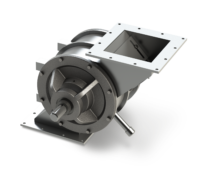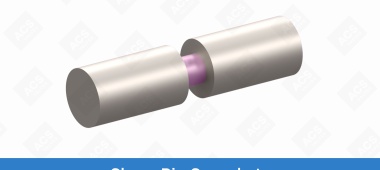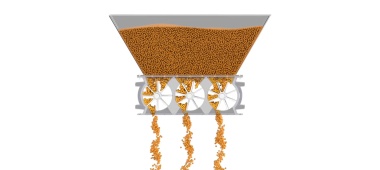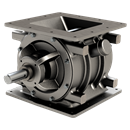Why choose a valve on rails?

Putting a valve on rails is a lot like building a robot with roller skates: it’s faster, easier to handle and infinitely more amusing to watch. (Here’s proof of both.)
Aside from the entertainment factor, why should you choose a valve on rails over your standard rotary valve? It depends on your application and the layout of your plant, but in many cases, breaking away from the norm brings substantial time and cost savings to your operation.
Check out the main three reasons to choose a rotary valve on rails.
It speeds up your process — a lot.
When you take a standard valve out of service, whether for maintenance or cleaning, it takes an average of six to eight hours to get it up and running again. Maintenance almost always involves removing the valve from the conveying system and dismantling it to remove various components before you can reach the interior.
With less fiddling and no nuts and bolts to slow you down, a rail system lets you access the valve’s internals in seconds. Just pull the two quick-release handles and slide out the rotor to disassemble it.
A safe estimate puts the average maintenance time at less than an hour, although the ACS Quick-Clean video clocks the process at about seven minutes.
In other words, a rail system could save you close to a full day’s work.
It makes NFPA compliance a breeze.
NFPA compliance is mandatory, but you don’t need to take your valve completely out of service to stay compliant.
A rail system makes it much easier to clean the rotor, perform maintenance or repairs, adjust the rotor tips, and inspect the valve’s internals — and check tolerances against NFPA standards.
To stay effective as an isolation device, a rotary valve needs to maintain a rotor-to-housing tolerance of 0.0079’’ to stay compliant with NFPA regulations. A rail system speeds up inspections and gets valves back to work faster.
It works well in different applications.
Though ACS Quick-Clean valves are well-suited for sanitary applications like food, cosmetics and pharmaceuticals, they’re not made exclusively for those industries — they’re actually much more versatile.
Like their more standard counterparts, Quick-Clean valves can be customized with different interior coatings, rotor types, rotor tips and shaft seals to match the demands of your application. Even if it’s not strictly sanitary, you might still consider a rail system for faster cleaning, maintenance and inspection.
For example, if your valve needs to convey different types of powders, a rail system makes it easy to clean and switch materials. If you’re conveying something abrasive, rails let you quickly check for wear on the valve’s internals.
Quest for the holy (g)rail
Ready to ditch hours of downtime and make cleaning less of a pain? Feel free to ask an ACS representative about customizing a Quick-Clean valve to suit your application.
Categories: NFPA , Sanitary
Go ahead, make your valve
Put your own spin on our customizable valves to get the best valve for your application, material and industry.

We have a series of items available for quick shipment
Items include: Pressure blower packages, MD Series, S-Pellet Series, Diverter Valves, Flex Tip Series, Screw Conveyors

How to: Check rotor-to-housing tolerances
Keep your rotary airlock valve compliant with NFPA guidelines and maintain strong performance by checking your rotor-to-housing clearances regularly.

Newsletter
Stay informed on all things ACSWe’ll keep you up-to-date on the latest valve how-tos, handy tips, and news from ACS. It’s totally free and you can opt out at any time.







